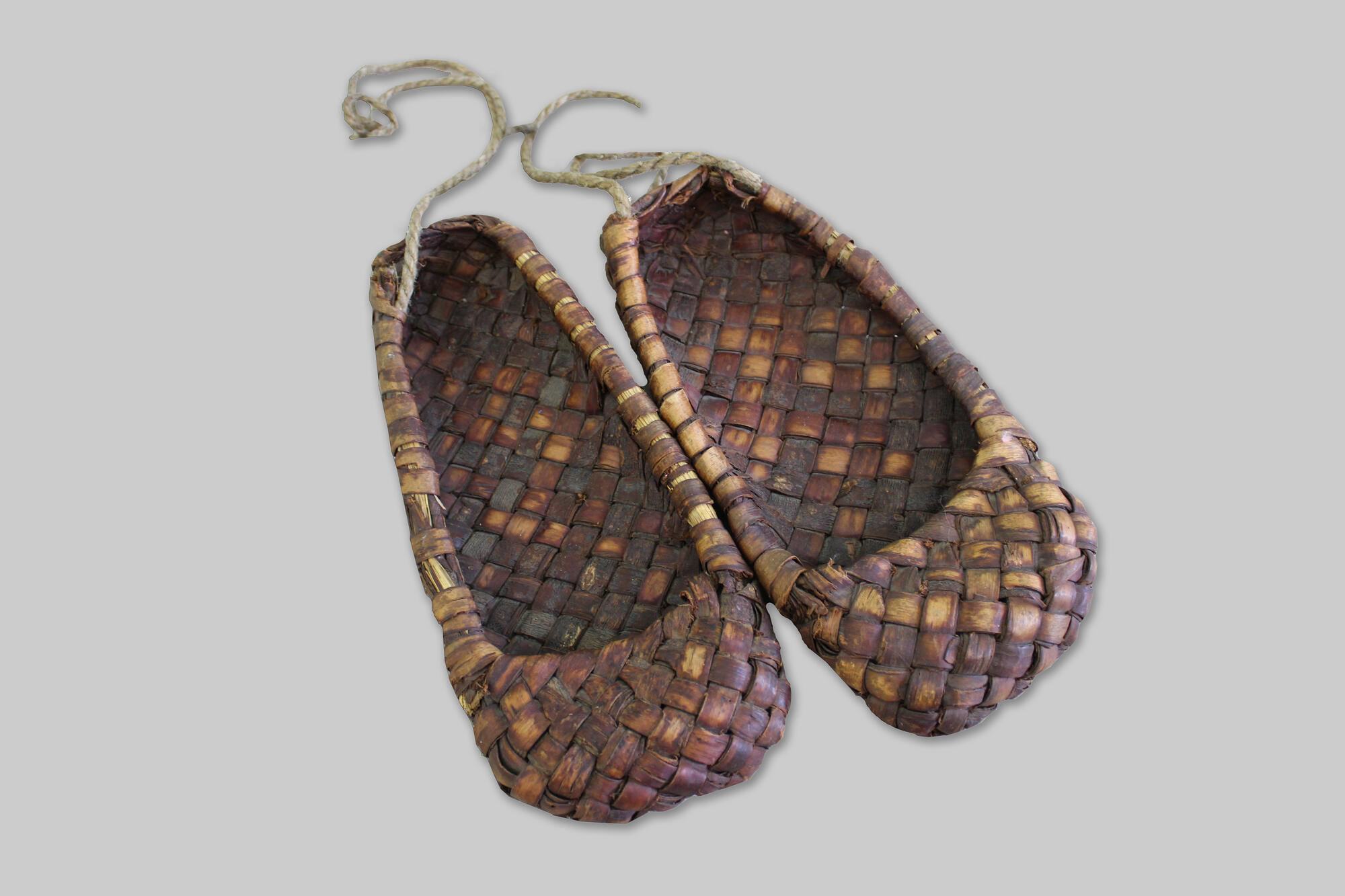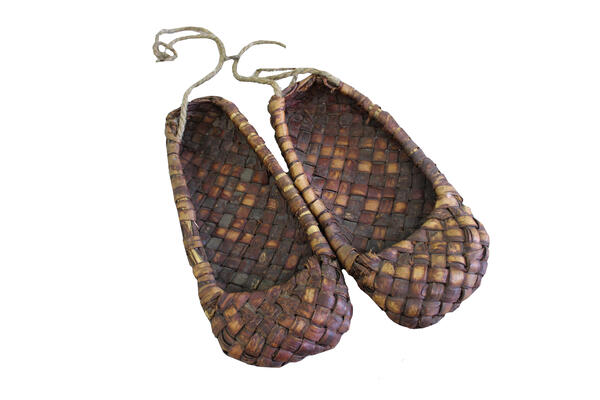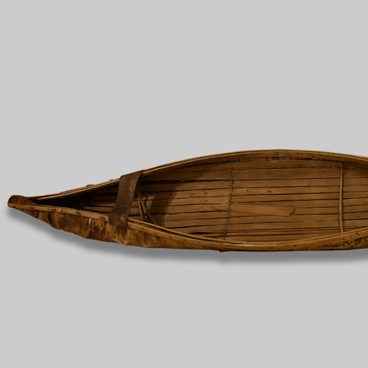Bast shoes — low flimsy shoes, woven from bast fibre, birch bark or hemp. They were worn in the old days in Russia almost everywhere and up to the 1930s. Bast shoes nowadays — one of the main symbols of traditional national life.
In Siberia, such shoes were inappropriate and impractical: they were rarely worn there — bast shoes were easily recognized by families of immigrants who had just moved to the north, for example, from the western provinces. And although the entire Russian population of Siberia at different times came here from the west, the first settlers (chaldons) treated the new settlers with some prejudice, calling them lapotnik (bast shoes). The Siberians themselves preferred teal or brodni, but occasionally there were also birch bark bast shoes. To strengthen it, the sole of the bast shoes was tied with a rope or sewn with leather.
To make one bast shoe, seven birch bark bast fibres were required, two meters long each. The bast fibre had to be removed from the smooth part of the birch trunk so that it had no defects along its entire length. Therefore, grown, smooth and tall trees were chosen for harvesting. Often, after removing the bark suitable for weaving, the tree was left with a bare trunk. The width of one bast was about the width of the thumb on a person’s hand — it was men who harvested bast and wove them into bast shoes (they were taught this craft from childhood to develop skill).
Also, the work required a wooden block, approximately corresponding to the size of a man’s or a woman’s foot, and a knife for cutting bast. Another mandatory and special tool — the kochedyk, which resembles a flat curved awl. The purpose of this tool — to lift one of the loops of the already woven part of the bast shoe in order to thread the free end of the bast into it.
In Siberia, such shoes were inappropriate and impractical: they were rarely worn there — bast shoes were easily recognized by families of immigrants who had just moved to the north, for example, from the western provinces. And although the entire Russian population of Siberia at different times came here from the west, the first settlers (chaldons) treated the new settlers with some prejudice, calling them lapotnik (bast shoes). The Siberians themselves preferred teal or brodni, but occasionally there were also birch bark bast shoes. To strengthen it, the sole of the bast shoes was tied with a rope or sewn with leather.
To make one bast shoe, seven birch bark bast fibres were required, two meters long each. The bast fibre had to be removed from the smooth part of the birch trunk so that it had no defects along its entire length. Therefore, grown, smooth and tall trees were chosen for harvesting. Often, after removing the bark suitable for weaving, the tree was left with a bare trunk. The width of one bast was about the width of the thumb on a person’s hand — it was men who harvested bast and wove them into bast shoes (they were taught this craft from childhood to develop skill).
Also, the work required a wooden block, approximately corresponding to the size of a man’s or a woman’s foot, and a knife for cutting bast. Another mandatory and special tool — the kochedyk, which resembles a flat curved awl. The purpose of this tool — to lift one of the loops of the already woven part of the bast shoe in order to thread the free end of the bast into it.
Due to the simplicity of manufacture and fragility, bast shoes were distinguished by extremely low cost. They were not woven in all regions of Russia, so they were often the subject of barter. Weaving was done mainly in winter, when there was no field work. A farmer wore at least 50 pairs of bast shoes a year, but it was still cheaper than buying leather boots.


